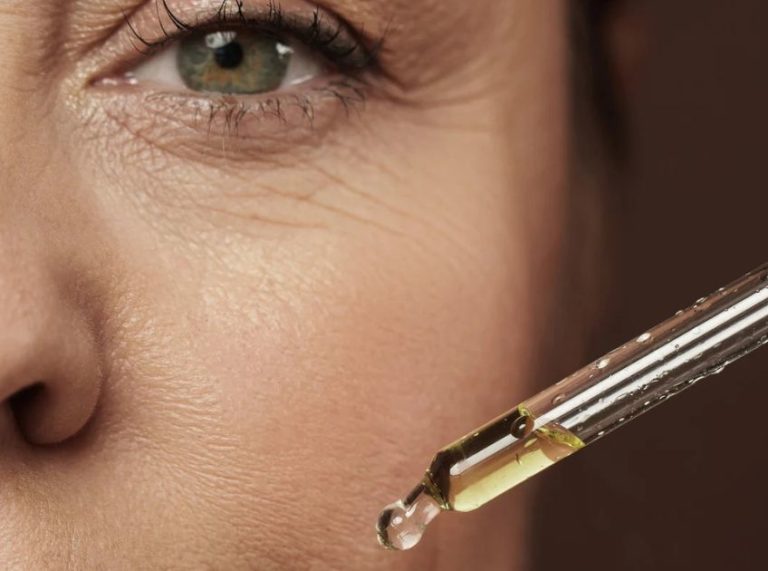
Important: This article is for informational purposes only. Please read our full disclaimer for more details.
Imagine you have a bowl of Maggi with chocolate sauce; would you eat it? I know you never eat this abnormal combination.
The same goes for skincare products. Even though there are different types of skincare products in the market, no one product fits all skin types. You may need many hits and trials, and combinations to find the right product for you.
Article Contains
Combining any skincare product includes selecting the correct items and understanding how they are associated with each other. While a few combinations can do wonders for your skin, others can do more harm than good.
Let’s understand the skincare combination you should avoid to keep your skin safe. But first, let’s learn about some commonly used skincare ingredients so that understanding what to avoid becomes easy.
Common Skincare Ingredients

1. Retinoids (1)
Vitamin A-derived drugs such as retinol and tretinoin are known for their anti-aging benefits. They increase collagen production, minimize fine lines and wrinkles, and enhance skin texture.
2. Vitamin C (2)
Vitamin C is a potent antioxidant that brightens skin, levels tone, and protects against harm. It also boosts collagen generation and minimizes patches and hyperpigmentation.
3. AHAs and BHAs
AHAs (3) and BHAs (4) are chemical exfoliants that help remove dead skin cells, unclog pores, and enhance skin surfaces. AHAs, like glycolic and lactic acid, act on the skin’s surface, but BHAs, such as salicylic acid, penetrate more deeply into the pores.
4. Niacinamide (5)
Niacinamide, generally known as vitamin B3, is a multifunctional ingredient that reinforces the skin’s barrier and decreases irritation. It also helps with clogged pores and uneven skin tone.
Skincare Combinations to Avoid
While skincare routines are exceptionally personalized, a few product combinations may need to work better together or create irritation or unfavourable resposnses.
Here are a few combos you ought to avoid-
1. Retinoids and Vitamin C
Retinoids and vitamin C are vital substances that offer multiple benefits to the skin. However, simultaneously using them may be too aggressive for specific skin types, leading to irritation, redness, and sensitivity.
If you include both in your skincare routine, using them on alternate days or at different times is best to avoid any adverse effects.
2. Retinoids and Benzoyl Peroxide
Benzoyl peroxide is critical in skin breakout medications, whereas retinoids are utilized as often as possible for anti-aging.
Since these chemicals are unreasonably cruel, combining them might cause unusual dryness and redness. If you use both, consider using them on alternate days or adjusting your skincare schedule accordingly.
3. AHAs/BHAs with Vitamin C
Alpha hydroxy acids (AHAs) and beta hydroxy acids (BHAs) are chemical exfoliants that help exfoliate dead skin cells and clear clogged pores. Vitamin C is an antioxidant that brightens and protects skin from environmental damage.
While both AHAs/BHAs and vitamin C have advantages for the skin, taking them together may increase irritation and inflammation. If you wish to combine both into your regimen, do it at a specific time or on alternate days.
4. Niacinamide and Vitamin C
Niacinamide, also known as vitamin B3 and vitamin C, are potent antioxidants that significantly benefit the skin. However, using them together may cause flushing or irritation, especially in individuals with sensitive skin.
If you plan to use both components, it’s recommended that you start with a low concentration and observe your skin for any adverse reactions.
5. Exfoliating Items and Physical Scrubs
Exfoliating products such as AHAs, BHAs, and retinoids are excellent for clearing dead skin cells and increasing cell turnover. On the other hand, physical scrubs use abrasive particles to exfoliate the skin physically.
However, both exfoliants and physical scrubs can be harsh on the skin, leading to skin irritation, redness, and micro-tears. Therefore, it is recommended to choose one exfoliating method and use it as directed, typically only a few times a week.
6. Retinol and AHAs/ BHAs
The skin can be exfoliated using alpha hydroxy acids (AHAs) and beta hydroxy acids (BHAs). AHAs include glycolic, lactic, mandelic, and citric acids, while the most common BHA is salicylic acid, which could be sodium salicylate.
Acids and retinol don’t always work well together. You can use all of them separately.
Conclusion
Developing a skincare routine that works for your skin is a trial-and-error process. Knowing which combinations to avoid can help you achieve the best results while reducing the risk of irritation or adverse reactions.
Choosing skincare products that complement each other is essential to maintain healthy and attractive skin for years. By anticipating which combinations work best, you can keep your skin looking its best.
Always patch-test new products before using them, and if you have any concerns about your skincare routine, consult a dermatologist or skin care professional for advice.
Image Source : canva
Related Articles
- Which Skincare Ingredients That Work Well Together?
- DIY Vitamin E Facial Serum
- How to Use Retinol and Alpha Arbutin Together
- Can Skin Get Used to Products?















